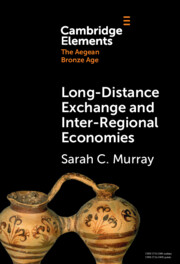Element contents
Long-Distance Exchange and Inter-Regional Economies
Published online by Cambridge University Press: 12 December 2023
Summary
Keywords
- Type
- Element
- Information
- Online ISBN: 9781009319188Publisher: Cambridge University PressPrint publication: 18 January 2024
References
- 3
- Cited by

